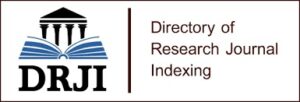Risk Factors Contributing to the Incidence of Intestinal Protozoa in District Swat.
Swat, Khyber Pakhtunkhwa (KP), based on data from two camps over six months. Key factors examined include gender, age, socioeconomic status, and travel history. In Camp 1 (Aug 2022-Jan 2023) and Camp 2 (Feb-Jul 2023), males were more affected, comprising 62.50% and 57.14% of infections, respectively. Males showed higher infection rates during the early months, gradually declining. Females had fewer infections but also experienced a steady decrease in prevalence. Children aged 0-15 years were the most affected, accounting for 35.45% of infections in Camp 1 and 36.88% in Camp 2, reflecting their higher vulnerability. Adults aged 16-30 were the next most affected, while older adults (45+) showed lower infection rates, possibly due to better hygiene practices or reduced exposure. Low-income individuals were disproportionately affected, making up 47.45% of infections in Camp 1 and 53.75% in Camp 2. This group’s greater vulnerability is linked to limited clean water and sanitation access. Middle-income individuals also faced significant infection rates, while high-income individuals had the lowest prevalence. Local transmission was the primary source of infections, accounting for 48.61% in Camp 1 and 55.00% in Camp 2. Regional transmission followed, while national and international travel contributed minimally, suggesting that most infections were acquired locally due to sanitation and hygiene challenges. The study highlights the complex interplay of gender, age, socioeconomic status, and travel history in the spread of intestinal protozoa in District Swat. Effective interventions should focus on improving sanitation, water access, and health education, particularly for vulnerable groups such as children and low-income populations. Enhanced surveillance and targeted prevention measures are essential to control the local transmission of protozoal infections.
Keywords: Intestinal protozoa,




















